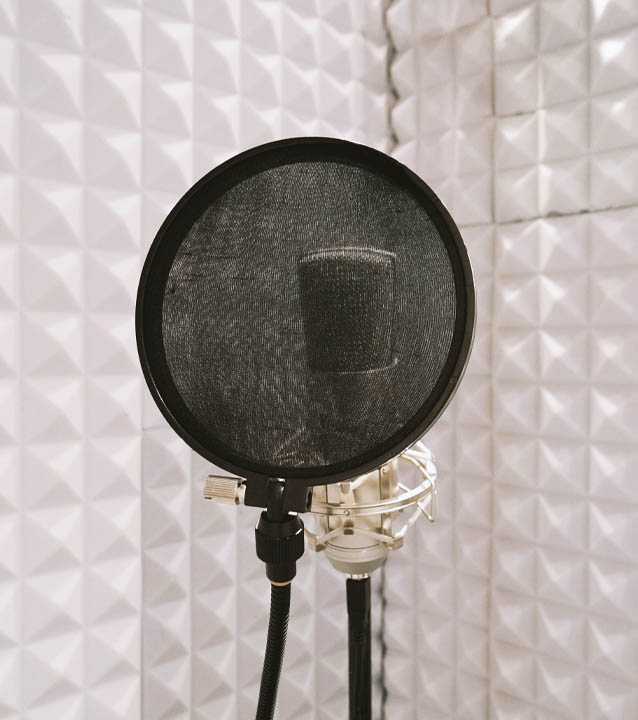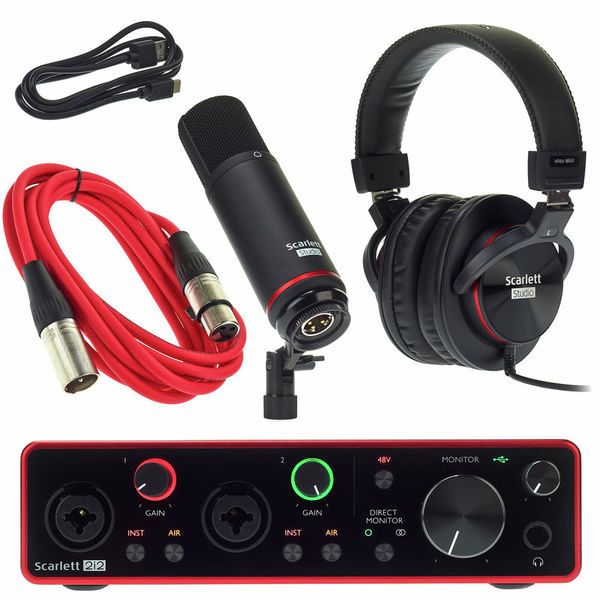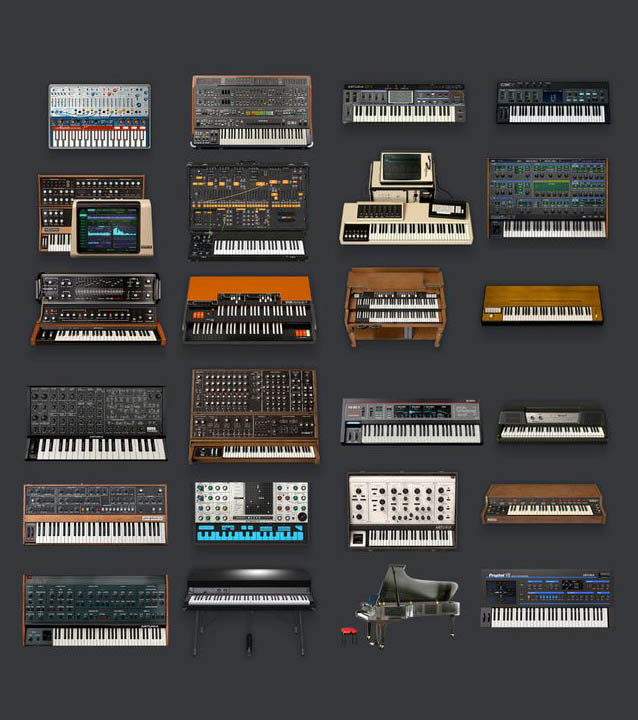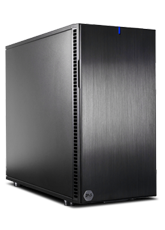Must-Have Equipment For
Your Home Studio
Setting up a music studio from home has been a dream of many musicians (myself included) and become increasingly popular among music enthusiasts and professionals alike. With technological advancements, it’s now easier than ever to create a high-quality recording environment right in the comfort of your own space. However, when it comes to building your home music studio, it’s crucial to ensure you have the essential equipment needed to bring your musical visions to life. In this article, we will explore what should every home music studio have, as well as provide recommendations for music recording equipment for beginners looking to establish a solid foundation.
Creating Your Perfect Setup
Building a basic music studio requires careful consideration of these essential pieces of equipment. However, it’s essential to remember that the music studio setup is a highly personal endeavor, and your choices may vary based on your specific needs and musical preferences. Continuously research and experiment with new equipment and techniques to refine your setup and enhance your creative process.
We will break down what our picks are for the most important and valuable things your music studio needs to get started.
Table Of Contents:
Home Studio Must Haves
DAW (Digital Audio Workstation)
Audio Interface
Headphones / Monitors
Storage / Backup
Midi Controller/s
Instruments



Must Have #1 Digital Workstation
Digital Audio Workstation (DAW): A DAW is the software centerpiece of your home music studio. It provides a platform for recording, editing, mixing, and mastering your music. With a multitude of DAW options available, such as Ableton Live, Logic Pro, and Pro Tools, it’s essential to explore different options to find the one that aligns with your workflow and preferences. Your chosen DAW will serve as the canvas on which you paint your musical ideas, allowing you to shape and mold them into polished and professional compositions.
We have this at #1 spot beacuse its cruicial to the success of your productions. Now PC’s and Macs vary in price and specs so its important to understand your requirements before you get started. This is one of if not the most expensive pieces of your setup. You can use a laptop if you are looking to be on the go however if its a home studio with a fixed location get a standalone PC or Mac. They are cooled better have better performance and can add additional drives for that growing production and sample library.
Almost all DAW’s these days such as Ableton, Pro Tools and Logic require the following sort of spec (not a potato but still not the most expensive of setups). Keep in mind that these specs are minimum required. As you start adding more virtual instruments it consumes CPU usage which and bog things down. We will do a complete review of your best setups for PC and MAC for your DAW’s later this month. Here are the entry levels to get you started.
Windows
Windows 10 / Windows 11
Intel® Core™ i5 or an AMD multi-core processor
8 GB RAM
ASIO-compatible audio hardware
Approximately 3 GB disk space (1TB Recommended)
Mac
macOS High Sierra 10.13 to Ventura 13
Intel® Core™ i5 processor
Apple silicon
8 GB RAM
Core Audio compliant audio interface recommended
Approximately 3 GB disk space (1 TB Recommended)
Must Have #2 Audio Interface


An audio interface acts as the vital link between your instruments, microphones, and computer, ensuring seamless communication and enabling you to capture and process audio signals with pristine clarity. It serves as the heart of your home music studio, converting analog audio into digital data that can be manipulated and recorded within your digital audio workstation (DAW).
When choosing an audio interface for your home music studio, several factors should be taken into consideration to ensure optimal performance and compatibility with your setup. Firstly, consider the number of inputs and outputs required to accommodate your recording needs. If you plan to record multiple instruments simultaneously or incorporate external hardware processors, such as compressors or equalizers, having a sufficient number of inputs and outputs is crucial. This allows you to capture every element of your composition independently and maintain a high level of flexibility during the mixing and editing process.
Another important consideration is the quality of the preamps built into the audio interface. Preamps amplify the weak analog signals from your microphones or instruments, bringing them to a suitable level for digital conversion. High-quality preamps can significantly improve the clarity, detail, and dynamic range of your recordings. Look for an audio interface that offers transparent and low-noise preamps, as this will ensure accurate and faithful reproduction of your audio sources.
Compatibility with your chosen DAW is also essential. Different audio interfaces have varying degrees of integration and compatibility with specific software. While most interfaces support major DAWs, it’s important to check the manufacturer’s website or user reviews to ensure seamless operation and minimize any potential compatibility issues. We have a full breakdown of audio interfaces such as the Scarlett Series from Focusrite and alternatives to check out from the menu!
Protecting your valuable recordings and projects is crucial in the world of music production. As a music producer who has lost months of projects in the past I can tell you, your creations are not just a labor of love but also a significant investment of time, effort, and creative energy. Implementing a reliable storage and backup solution is essential to ensure that your music is safe from data loss and potential disasters.
One of the most common and practical methods of storage and backup is through the use of external hard drives. Seagate Drives have been a leader in quality external drives for years and a go to for music producers. These devices provide a portable and convenient way to store your music files and project sessions. They come in various capacities, allowing you to choose one that suits your storage needs. By regularly backing up your work to an external hard drive, you create a reliable offline copy that can be easily accessed even if your computer experiences a hardware failure or other technical issues.
In addition to physical storage, cloud storage services have gained immense popularity in recent years. Cloud storage offers the advantage of storing your music files and projects on remote servers accessible via the internet. This not only provides an extra layer of security but also allows you to access your music from anywhere with an internet connection. Services like Dropbox, Google Drive, and OneDrive offer varying storage capacities and plans tailored to individual or professional needs. By utilizing cloud storage, you can have peace of mind knowing that your music is stored safely offsite and can be easily recovered if any unforeseen circumstances arise.
When considering storage and backup options, it’s important to establish a regular backup routine. Set a schedule or use automated backup software to ensure that your music files are consistently backed up. Additionally, it’s advisable to periodically check the integrity of your backups by verifying that the files are accessible and not corrupted.
We give a complete breakdown of our picks for best physical and cloud backups in our Storage and Cloud Best Picks! Moral of the story back everything up every where any chance you get.
Must Have #4 Midi Controllers & Instruments


Okay to be clear from the onset we are including Midi Controllers, Virtual Instruments and Instruments here. We can break them down individually but for this article we will keep things under one banner. For musicians who work with virtual instruments and software synthesizers, a MIDI controller is an indispensable tool that unlocks a world of creative possibilities. These versatile devices serve as a bridge between the musician and the digital realm, allowing for intuitive and expressive control over digital sounds.
MIDI controllers come in various forms, offering a wide range of features to suit different playing styles and musical preferences. Piano-style keys provide a familiar and tactile interface for pianists and keyboardists, enabling them to play melodies, chords, and intricate harmonies with ease. Drum pads, on the other hand, cater to percussionists and electronic music producers, offering a responsive and dynamic way to trigger drum samples and create rhythmic patterns. Combine the both and get the benefits of each but some may say with lackluster performance pads.
VST plugins have revolutionized the world of music production, offering an extensive range of instruments, effects, and processors that can transform any home studio into a powerhouse of creative possibilities. Being able to recreate the sounds of real instruments and provide professional-grade audio processing, VST plugins allow musicians and producers to achieve professional-sounding results without the need for expensive hardware or a massive physical studio space.
The integration of VST plugins with traditional instruments opens up a world of creative possibilities. You can layer virtual instruments with live recordings to create lush and rich soundscapes. For example, you might use a virtual string ensemble to add orchestral elements to your piano composition, or incorporate electronic drums to enhance the groove and energy of your live drum recordings. The seamless integration of VST plugins and traditional instruments allows you to combine the best of both worlds, resulting in unique and captivating musical productions.
We have multiple articles on software plugins and hardware with midi controllers like the Native Instruments Maschine Mikro MK3. As well as VST’s like the Arturia V Collection or drum synths like the UJAM Drum Brute. Find what works for you and expand upon it.
Must Have #5 Headphones & Monitors
Accurate monitoring is crucial in a home music studio setup, and both studio monitors and headphones play essential roles in delivering a faithful representation of your recordings. Studio monitors, specialized speakers designed for critical listening, provide a flat frequency response, allowing you to hear your music with clarity and precision. They offer an unbiased representation of your audio, revealing any imperfections or sonic inconsistencies that may need to be addressed during the mixing and mastering stages.
When selecting studio monitors for your home music studio, look for models that offer a wide frequency range, ensuring that you can accurately hear the entire spectrum of your music. This enables you to make precise adjustments to the balance, EQ, and dynamics of your mixes. Additionally, choose monitors that provide adjustable settings, such as room correction controls, to cater to the acoustic characteristics of your specific listening environment. This ensures that you can compensate for any irregularities or resonance issues in your room, allowing for more accurate and reliable monitoring.
Alongside studio monitors, a reliable pair of headphones is a must-have tool for any home music studio. Headphones provide an alternative listening option and allow you to work on your mixes and recordings with precision, particularly during late-night sessions or when you need to avoid disturbing others. When selecting headphones, opt for closed-back designs to minimize sound leakage and ensure that the audio you hear is isolated from external noises.
Closed-back headphones provide excellent isolation, allowing you to focus solely on the details of your music. They create a controlled listening environment by preventing sound from escaping or bleeding into the microphone during recording sessions. This is particularly beneficial when tracking vocals or acoustic instruments, as it helps to achieve cleaner and more accurate recordings.
When choosing headphones, consider factors such as frequency response, comfort, and durability. Look for headphones that offer a balanced frequency response, providing a neutral and accurate representation of your music. Comfort is also crucial, especially during long mixing or recording sessions, so opt for headphones with ergonomic designs and padded ear cups. Additionally, ensure that the headphones are built to withstand the rigors of regular use in a studio environment.
By combining the accuracy of studio monitors with the convenience and isolation of headphones, you can create a well-rounded monitoring setup for your home music studio. Utilize the studio monitors for critical listening and fine-tuning, and rely on the headphones for detailed scrutiny and precision during mixing and recording sessions. With both tools at your disposal, you can confidently make informed decisions and produce music that translates well across different playback systems, ensuring that your artistic vision is faithfully realized.
Build Your Own Studio Not Someone Elses
When it comes to setting up a music studio, there are two key factors to consider: building your own studio and testing your room for sound and acoustic treatment. While it may be tempting to replicate someone else’s studio design or rely solely on generic advice, there are significant benefits to customizing your own space to suit your unique needs and preferences.
Building your own studio allows you to tailor the layout, equipment placement, and overall design to optimize workflow and creativity. Every musician, producer, or engineer has their own unique way of working and interacting with their gear, and a customized studio ensures that everything is within easy reach and facilitates a seamless workflow. By having a studio designed specifically for your needs, you can create an environment that enhances your productivity and creativity, ultimately leading to better musical output.
Moreover, designing your own studio empowers you to make informed decisions about the acoustic treatment of your space. Room acoustics significantly impact the quality and accuracy of the sound you capture and hear in your studio. Every room has its own sonic characteristics, and by understanding and addressing these characteristics, you can achieve a more accurate and balanced listening environment.
Testing your room for sound and acoustic treatment involves assessing the room’s frequency response, resonance, and reverberation characteristics. This process allows you to identify any issues or deficiencies in the room’s acoustics and make the necessary adjustments to optimize the listening experience. This may include adding diffusers, absorbers, bass traps, or other treatments to control reflections, reduce standing waves, and enhance the overall sound quality.
By testing your room and implementing appropriate acoustic treatments, you can achieve a more accurate representation of your music. This is particularly important when mixing and mastering, as the decisions made in an acoustically untreated room can lead to imbalanced mixes that don’t translate well on other playback systems. A well-treated room provides a more reliable and consistent listening environment, allowing you to make more accurate judgments and produce professional-quality music.
While it’s beneficial to gather inspiration and learn from existing studio designs and setups, it’s important to recognize the value of customization and personalization. Building your own studio allows you to create a space that aligns with your unique workflow, preferences, and sonic goals. Additionally, testing your room for sound and implementing proper acoustic treatment ensures that you have an accurate listening environment, enabling you to make critical decisions based on what you hear rather than the limitations of the room.
In conclusion, building your own studio and testing your room for sound and acoustic treatment are essential steps in creating an optimized and professional music production environment. Customization allows you to tailor the studio to your specific needs, while testing and treating your room ensures accurate monitoring and a reliable listening experience. By investing time and effort into these aspects, you lay the foundation for producing high-quality music that accurately translates across various playback systems.
Contact
Our Team
team@cobwebaudio.com
Enquiries
613-706-0472
Site Navigation
DAW & Recording
Instruments & Equipment
Software & Plugins
Guides
Our INFO
Privacy Policy
About Us
Advertise On Cob Web Audio
Sponsored Content
Sitemap





